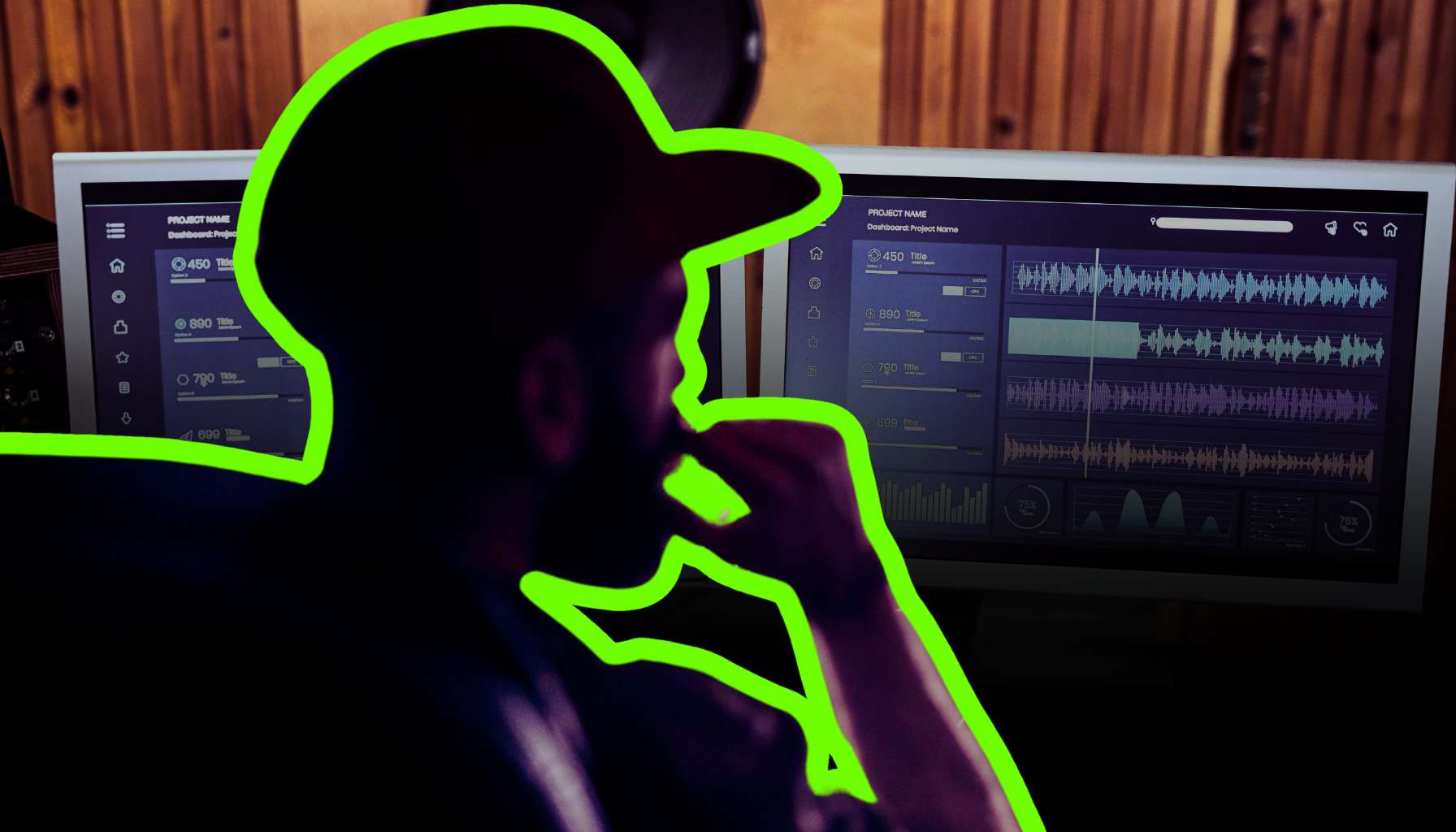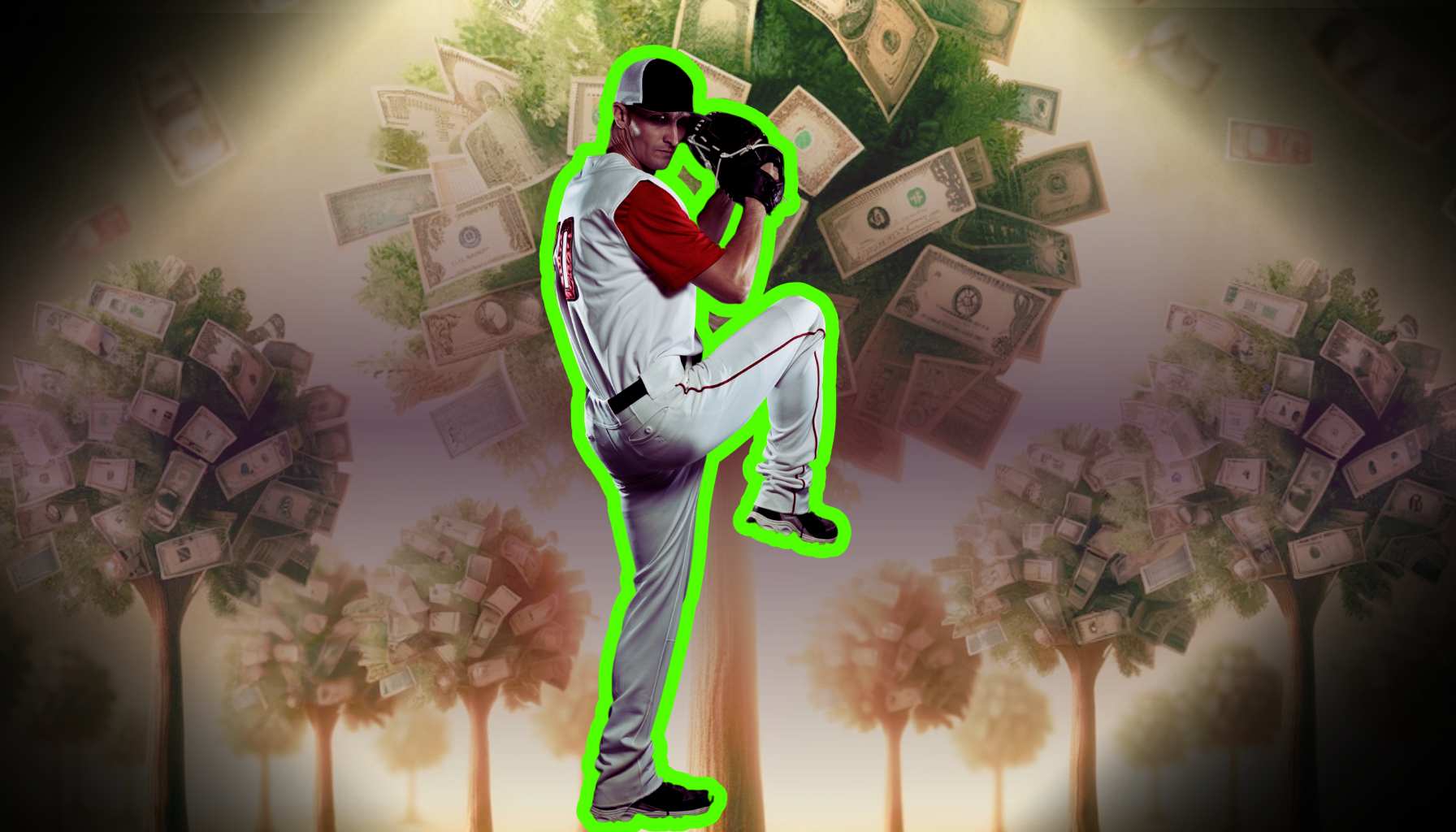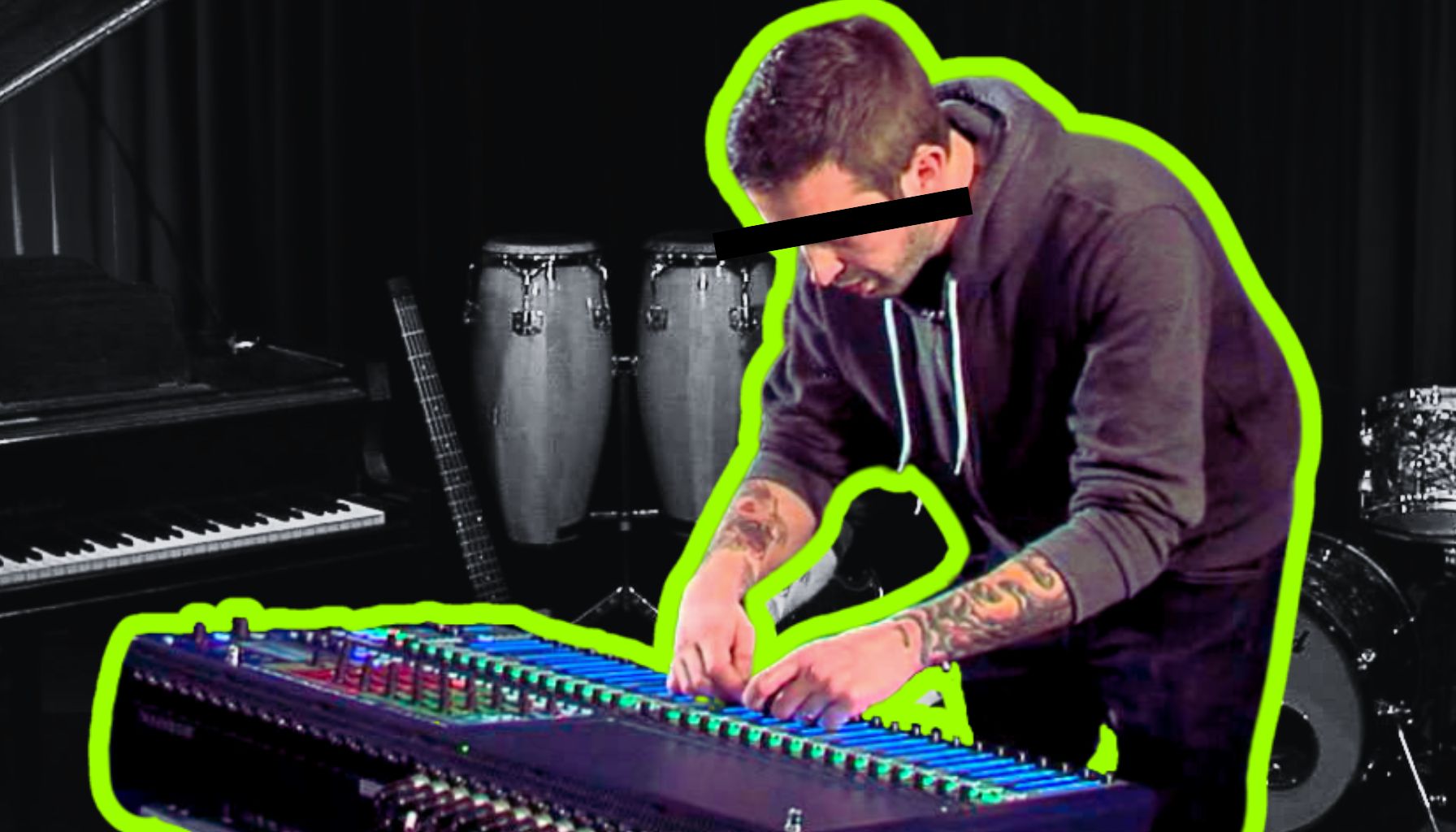Introduction
In the riveting symphony that is musical composition, each element plays a vital role in evoking emotions and telling a story. But how do we go from understanding these elements to practically applying them? Let’s dial in on the elements that create the suspense before the grand reveal—the tension before the release.
Musical Elements That Create Tension
Harmony and Dissonance
Just as a spicy jalapeño can take a taco from tame to fiery, dissonance in music adds the kick that makes a melody pop with tension. It’s the audible rub, the “when will it resolve?” that keeps listeners on the edge of their seats. Chord progressions act as a roadmap through the song, and by throwing in an unexpected diminished seventh or an augmented chord, we keep things interesting. Think of the Beatles’ “A Day in the Life” where a single chord strikingly lingers, leaving listeners yearning for resolution. And when we use dissonance intentionally, orchestrating disharmonious notes in a way that feels just right, it’s like adding a secret ingredient that makes the song unforgettable.
Rhythm and Tempo
Beware the power of an unexpected rest or syncopated beat! Rhythm holds sway over our hearts like a drum-major—when it changes, we can’t help but follow. Slip in a pause where a beat ought to be, or quicken the tempo like a heartbeat in suspense, and voilà, you’ve got palpable tension. And let’s not underestimate the dramatic potential of silence; a well-placed rest can speak volumes and stand out as much as the most intricate riff.
Melodic Devices
Now, let’s talk about leading tones—the pied pipers of music. These notes coyly hint at what may come next, but they’re the chocolate truffle of composition; they make a promise of the sweetness of release. Meanwhile, sequences and melodic patterns are the breadcrumbs leading us through the woods of musical narrative. They build anticipation, creating tension as we wonder, will we get out of the woods or are we lost forever? As we indulge in these elements, we weave a tapestry of anticipation. But the story is only half-told without a climax, and this is where we pivot toward the nuanced art of deftly de-escalating that tension.
Preparing for the Release
As we venture forth from the landscape of tension, with its sharp cliffs and winding paths, we must now consider the cathartic descent into the valley of release. The techniques we adopt here can dramatically alter the listener’s journey, buffeting emotions like a leaf caught in the wind. Creating tension is like igniting a firework; the vibrant explosion is meaningless without the suspenseful fuse that leads up to it. Conversely, the release that follows is the moment of awe, the comforting darkness that envelops the sky after the spectacle. Each musical element, be it harmony, rhythm, or melody, serves as a matchstick that lights the fuse. How we align these elements, how forcefully we strike them against the box—that’s what shapes the tension in our symphonic narrative. Imagine the epic build-up as your favorite roller coaster creeps toward the sky. That’s the kind of exhilarating tension we’re orchestrating. But remember, the thrill is never as sweet without the following rush of wind as you plunge down the first drop. It’s this dynamic journey of rise and fall that we’ll tackle in the subsequent section, examining techniques that skillfully build and dismantle the compelling force that is musical tension.
Compositional Structures for Tension and Release
If tension and release in music were a movie, compositional structures would be its screenplay—a blueprint not only guiding the audience but also setting their expectations on edge. Just as a filmmaker uses different scenes to build a narrative, musicians use songwriting layouts to shape the emotional journey of their pieces. In the quest for eluding predictability, sometimes all you need is the right twist in the story arc.
Songwriting Layouts
Starting with standard structures like verse, chorus, and bridge, we find the familiar friends of tension and release. You’ve experienced this a thousand times: a verse sets the stage with intrigue, a chorus comes in like a burst of adrenaline, and a bridge acts as the plot twist that deepens the tale before the final act. These are the bread and butter of hit songs, allowing artists to play with listeners’ emotions masterfully, like puppeteers pulling on the heartstrings of their audience. But what about the brave souls stepping off the beaten path? Let’s not underestimate the power of experimental forms and the element of surprise. Throwing a curveball in song structure, like a sudden key change or an abrupt stop, can act like a jolt of electricity, supercharging the music with tension. And when the dust settles, and the familiar returns, the release feels like the sweet resolution of a cliff-hanger.
Conceptual Approaches
Conceptually speaking, the story arc becomes a guiding light for the emotional and narrative contour of a piece. It’s not enough to string together a few verses and choruses; the music must emote, it must rise and fall with the grace of a dancer’s leap and landing. Viewers lean in with eyes wide when a story escalates, and that same held breath is found waiting for the drop after a climactic build in a song. Now let’s take a moment for thematic development over time. Tension often benefits from a slow burn, like a good thriller novel. Small musical motifs may reappear, gaining complexity with each iteration, gradually layering anxiety until, at last, the release comes. It’s like watching seeds planted early in a story grow into forests of meaning, where each leaf unfurls a new emotional layer. As time progresses, the audience can’t help but become entangled in the narrative’s inevitable push and pull. As we string these concepts on the line, we subtly weave a web that catches the listener off-guard, compelling them to stick around for what’s next. It’s here, in the land of the unexpected and unexplored, that our musical tale dips its toes into the waters of production techniques—signaling a tidal wave of tension that is artfully crafted not just with notes, but with the very fabric of sound itself. In our eager anticipation, we pivot towards production techniques that enhance tension, a playground where sonic textures and landscapes transform by the minute, and where creativity meets technology. Here, effects and automation are not just tools; they’re the wizards behind the curtain, conjuring spells that transmute musical anxiety into palpable energy. This is where we’ll move next, peering into the alchemist’s cauldron of mixing and mastering to unveil yet another layer of our narrative—the magical polish that turns tension into an unforgettable, bone-chilling symphony. No drum roll necessary for this segue; the stage is set, the anticipation ripe. Let’s dive into the sonic science that allows music to not just play, but to truly resonate.
Techniques for Building and Releasing Tension
Ever felt that churn in your stomach as a rollercoaster crests its peak, mere moments before the thrilling descent? That’s tension at its physical best, and believe it or not, your music can deliver that same gut punch with the right techniques. In this section, we’re diving into the art of crafting those edge-of-the-seat moments in music that keep listeners hanging on every note.
Dynamic Variations
First up, dynamics – they’re not just loud and soft, they’re the scream before the whisper that makes the audience lean in closer.
Exploring Crescendos and Decrescendos
Ever so gently, a crescendo sneaks into the melody, building like a wave that refuses to break, pulling listeners into the undertow of anticipation. This is where you control the narrative, teasing with volume before unleashing a fortissimo that knocks the wind out of your audience. Likewise, a well-timed decrescendo brings that moment of sweet relief as the music recedes to a tranquil piano, allowing for a collective exhale.
Volume Swells and Fades
Now imagine a volume swell: it’s like the musical equivalent of a sunrise, where every instrument wakes and stretches until the full glory of your sonic sun is on full display. Fades work in reverse – they’re the sunset of music, a signal for the introspective night that follows a high-energy day. These simple tools are anything but benign. They are your arsenal for manipulating emotional responses as dynamic as human experience itself.
Textural Changes
But there’s more to this tale of tension than just volume. Let’s talk texture.
Layering Instruments for Increasing Complexity
Consider for a moment the power of layering. Like a chef who knows that the secret to that perfect bite is the layering of flavors, a savvy composer stacks instruments for a richer, more complex taste. You start with the bass line, add a sprinkle of rhythmic guitar, then perhaps a pinch of synth before you serve up the full auditory feast. The complexity accumulates, scooping up every ounce of the listener’s attention.
Stripping Back for Release and Clarity
Conversely, stripping back is your palette cleanser. It’s deconstructing the layers until you’re left with the bare essence. This can create a starkness that’s as powerful as the most intricate arrangement – a moment of clarity that allows your audience to digest the previous barrage of sound.
Modulation and Key Changes
And what of the drama of key changes and modulation?
Modulating for Emotional Impact
A key change is that plot twist that no one saw coming – it can elevate a song from mundane to unforgettable. It’s like shifting gears in a car; done smoothly, it adds momentum. Done haphazardly, well, you might find your audience metaphorically lurching in their seats. But get it right, and that modulation will resonate with the emotional core of your listeners.
Effective Use of Pedal Tones
Ever hear of pedal tones? They’re the anchor, the steadfast note that everything else revolves around, an omnipresent hum that underpins your musical universe. It creates a suspension that cries out for resolution, turning the listeners into musical addicts craving the next chord for their fix. These techniques are but a few pages of the vast musical spellbook at your disposal as a composer. By mastering them, you wield the power to sculpt moments of intense anticipation and satisfying release in your music. Yet, the spell isn’t complete without a blueprint for your incantations. As we bridge towards
Compositional Structures for Tension and Release
Consider how these dynamic elements align within various songwriting layouts. In our next section, be prepared to explore how traditional formats like verse-chorus-bridge can be both adhered to and subverted, alongside more experimental structures that test the very boundaries of music creation. And just remember: amidst all the crescendos, decrescendos, and modulation, it’s the playful dance between the expected and the surprising that ensnares the listener, a reminder that in the realm of music, the only true constant is change.
Unraveling the Secrets of Musical Tension
Picture this: you’re on the edge of your seat, the soundtrack climbing, notes dancing on the precipice of resolution. It’s the emotional rollercoaster of tension and release in music, the core dynamics that keep your ears pricked up, waiting for the crescendo’s crash. Ever wondered what makes some tunes stick in our minds, playing on an endless loop? Let’s dive into the magic beneath the melody — the interplay of tension and release — and how it’s akin to storytelling, where every chord strikes a narrative arc.
The Emotional Rollercoaster: From Classical to Contemporary
Take, for instance, Beethoven and The Beatles. Worlds apart, yet both masters of the musical tug-of-war. Beethoven, with his symphonies, weaves a tapestry of anticipation, leaving listeners yearning for closure. The Beatles, on the other hand, served ‘Yesterday’ with a side of subtle suspense followed by satisfying resolve, making it unforgettable. This mechanism isn’t just an old-school trick; think of the heart-thumping build-ups in electronic dance music before the drop. These are testament to the timeless power of tension and release in affecting our emotions and leaving a lasting impression.
Dynamics at Play: Why Your Heart Skips a Beat
But why does tension grip us so? It’s the suspenseful silence before the storm — the gravitational pull towards unresolved chord progressions, creating an itch only musical resolution can scratch. This itch is deeply psychological, rooted in the anticipation of the familiar. When music defies expectation, we’re locked in. Our brains adore patterns and predictability. When the pattern is broken, we’re on high alert. It’s evolutionary — a primal instinct that also explains the spine-tingles or the lump in your throat. Tension in music leverages this instinct, teasing before pleasing, and ensuring the melody lingers long after the last note fades. Transitioning smoothly into the next symphony of our discussion, let’s consider the very constructs of music that serve as artisans of tension.
Building Blocks of Musical Suspense
Harmony’s Edge: Teetering Between Consonance and Dissonance
To dissect the anatomy of tension, we begin with the backbone — harmony. With the right chord progression, composers nudge us towards the edge before pulling us back to a warm, consonant embrace. Ever been intrigued by a piece of music that feels slightly off yet compelling? That’s dissonance at play. It’s like that one rebellious spice that you can’t quite place in a gourmet dish; unsettling, yet it brings profundity to the overall experience.
Rhythmic Rebellion
Rhythm enters the equation, toying with our temporal expectations. When a beat skips or a pause lingers longer than anticipated, we lean in. This is rhythm subverting norms, playing with pauses, and challenging our innate metronome. Ever clapped along to a song only to be tripped up by an unexpected break? That’s what we’re talking about. It’s a simple yet incredibly effective way of adding tension.
The Melodic Labyrinth
Diving into melody, the weaver of tales, where composers utilize notes as breadcrumbs, leading us through mysterious paths. The directional pull of leading tones has us longing for completion, while sequences and melodic patterns draw us into the labyrinth, each turn a narrative waiting to unfold. The right sequence can take the listener through peaks and valleys of suspense without a map, making the arrival at the final destination all the more gratifying. As we have now laid the foundation of understanding musical tension, the transition is perfectly poised to explore the techniques artists employ to dial the tension up and, just when it feels almost unbearable, to masterfully release it. In the next act, we will examine the craftsman’s tools — the crescendos, decrescendos, textural changes, and key modulations — and reveal how they are wielded to sculpt the emotional landscape of a piece. So, tighten your seat belts as we prepare to dive headfirst into the realm of dynamic variations and the artistry that goes into building and resolving musical tension.
In the symphony of music marketing, we’ve seen how various production techniques can turn a good track into a spine-tingling masterpiece by enhancing tension in music. But as we segue into Section VI, let’s pull back the curtain on genre-specific strategies—a veritable Pandora’s box of techniques that composers and producers use to keep listeners on the edge of their seats, or dancing frantically on the dance floor.
Genre-Specific Strategies
Classical and Orchestral
In the refined world of classical and orchestral music, composers are much like seasoned chefs—knowing just which ‘instrumental spices’ to combine to create an emotional feast for the ears. These maestros of drama skilfully place each violin stroke and each trumpet blast to craft scenes that can lift the soul or plunge it into despair. Instrumental roles in creating drama are paramount, with each section of the orchestra offering a unique color on the sonic palette. Picture Wagner’s ‘Ride of the Valkyries’—it’s hard not to feel the tension as the strings and brass build into a furious gallop. Moving from instrumental roles to the very fabric of the music, orchestration is a potent tool for conveying complex emotions. Composers often layer textures and motifs in a way that feels as much an emotional journey as a musical one. Take, for instance, the delicate yet powerful transition from tension to release found in Tchaikovsky’s ‘Swan Lake’. The orchestration tells a story that sometimes words cannot, sculpting the air with sounds that can evoke a tear or a triumphant smile.
Electronic and Pop Music
On the flip side, let’s plunge into the adrenalized world of electronic and pop music. Here tension isn’t your brooding villain lurking in the shadows—it’s the pulsating life of the party. Consider the build-ups and drops in EDM: these are not just transitions, but emotional checkpoints that guide the listener through the auditory experience. They’re the heart-pounding moments of a bass drop that send a collective shiver down the spine of a crowd—the musical equivalent of a rollercoaster’s thrilling descent after a lengthy climb. And while some might see them as the calculated use of synth leads and bass drops, there’s an intricate science behind these sonic explosions that keep the crowd buzzing. If orchestration is classical music’s emotional language, then the carefully timed risers, pitch shifts, and the ever-popular drop are electronic and pop music’s Morse code—dotting and dashing their way to our dopamine receptors. As we march to the beat of this grand musical narrative, let’s not overlook how these genre-specific strategies intensify the ebb and flow of tension and release in music. Whether it’s a Beethoven symphony or a Skrillex track, building tension and navigating towards a rewarding release is a thread that weaves through the very fabric of music composition and production. As we prepare to descend into the FAQ section, remember that these questions are echoed in studios and music halls worldwide. Musicians, producers, and fans alike are continually searching for that perfect balance—if there is such a thing—between tension that grips and release that uplifts. Understanding this delicate dance is more than an academic exercise; it’s the core of music’s emotional language that, when spoken fluently, can move humanity in unison.
Have you ever felt like your track is on edge, poised to leap into the stratosphere at any moment? That’s the power of production techniques that amplify tension in music, and if you’re nodding in agreement, you’ve probably been harnessing this power instinctively. But let’s not just ride on instinct; it’s time to unpack these techniques to ensure your next track not only tiptoes on the edge but soars.
Production Techniques That Enhance Tension
In the balance between tension and release, the fulcrum often rests within the realm of production. It’s like cooking; knowing when to turn up the heat or let it simmer can make or break a dish—or in our case, a track.
Effects and Automation
Starting with effects and automation, imagine the buildup of a track as it heads towards a climactic drop. The music seems to spin out of control as filters rise, and the reverb tail expands, giving a sense of an otherworldly space. This isn’t just throwing in effects willy-nilly; it’s the art of gradually increasing reverb, delay, and filter sweeps that draw listeners closer to the edge of their seats. And let’s not forget automation – moving the knobs and faders ever so slightly (or aggressively, we don’t judge!) peaks that excitement even more, creating a roller coaster in sonic form.
Mixing and Mastering Considerations
Then we glide smoothly into mixing and mastering considerations. Have you ever felt the hair on your arms stand up during a song? Chances are, the spatial dynamics were fine-tuned to perfection, broadening the soundstage just as the chorus hits or strategically panning an instrument to make room for a thunderous beat. Mastering this technique means you can play puppeteer with your listener’s attention, pulling it from left to right, pushing it back, and then suddenly pulling it forward. And let’s not overlook our loyal friend, the frequency spectrum, which allows for contrast that can create an almost palpable tension before a satisfying release. As we delve into these nuanced realms of the production process, remember you’re composing not just with notes and rhythms, but with the very air that sound waves travel through. Now, picture a mosaic of sounds in various genres, from the fortissimo of a Beethoven symphony to the manic ticks of an EDM build-up. The transition to genre-specific strategies doesn’t just happen; it saunters in with a purpose.
Genre-Specific Strategies
In the next section, we’ll explore how genre-specific strategies can create a mood unique to each musical universe. Classical compositions use the tension of a full orchestra building to a crescendo that Wagner would nod at approvingly. Meanwhile, the orchestration itself carries the emotional weight, with every violin bow and timpani strike calculatingly contributing to the build-up. Jump into the world of electronic and pop music, and you’re dealing with calculated sonic booms. The build-ups and drops in EDM twist knobs of anticipation, while the careful use of synth leads and strategic bass drops makes for instant sensory overload in the best possible way. These techniques maximize the emotional roller coaster that listeners not only crave but come to expect. As we tie up the laces on the dance shoes of anticipation, let’s pirouette to the next chapter where we unpack precisely how these strategies manifest across classical orchestration to the pulsating energy of electronic beats. Stay tuned to understand how to sculpt dramas with sound and tap into the emotional reservoir that makes music an universal language. And if you thought producing tension in music was like trying to solve a Rubik’s cube blindfolded, fret not; we’ll explore the tricks and tweaks that make it as satisfying as hitting play on your favorite track. Now take a deep breath. We’re about to dive into the nuances of Classical and Orchestral tension strategies, where the stakes are as high as the notes of an opera diva. Or fasten your seatbelt for the drop into the Electronic and Pop Music landscape, where synths and bass drops reign supreme in the kingdom of tension. Get ready to see how breaking sound barriers is done, irrespective of genre.
Harmonic Techniques for Creating Tension
Let’s cut to the chase: you want your music to stick in the mind like a barbed arrow, and harmony is your bow. Harmonic tension is like the musical equivalent of biting into a jalapeño—spicy, surprising, and utterly memorable. So, how do we season our songs with just the right amount of harmonic heat?
Dissonance vs. Consonance
Think of dissonance and consonance as music’s love-hate relationship. They just can’t do without each other. Dissonance is that itch you can’t scratch, the unresolved musical conflict that demands attention. Toss in a diminished seventh or a minor second to make your listeners’ hairs stand on end, because discomfort in music, much like an unsettling cliffhanger in a thriller, drives anticipation. But here’s the kicker: dissonance is nothing without its soulmate, consonance—the “ahh” moment of soothing resolution. It’s the heartwarming reunion scene after a gut-wrenching breakup. Cycle from dissonant chords to consonant ones to give your audience that sweet release. It’s the classic narrative—tension, climax, and resolution—all encapsulated in a few bars of music.
Key Modulation and Chromaticism
If you’re feeling a tad more adventurous, key modulation is like a teleportation device in your harmonic toolkit. Switching keys mid-piece isn’t just showing off—it’s about relocating your listener to a whole new emotional plane. The distant the key change, the bigger the jolt; it’s the musical equivalent of a plot twist. Meanwhile, chromatic notes are the stealthy ninjas of harmonic tension. They tiptoe into the melody, creating just enough unease before they resolve back to the diatonic scale. Use chromaticism to paint shades of gray in a world that often expects black and white resolutions—subtle discomfort has never sounded so good. Right, now that you’ve got the harmony cooking, it’s time to talk rhythm—and not the kind you tap your foot to in the elevator. We’re diving into the pulsating heart of your track in the next section:
Rhythmic and Temporal Methods
. Yes, we’re going to mess with beats, toy with time, and maybe even break a few rules. Because what is music if not a playground for the audacious? In Section 3, you’ll learn how manipulating rhythm and meter can contribute massively to the tension in your music. From the off-beat seduction of syncopation to the heart-stopping suspense of a well-timed pause, rhythm is your secret weapon for gripping your audience by the ears. But let’s not get too ahead of ourselves—that rhythmic rollercoaster awaits just around the corner. Prepare to delve into the nitty-gritty of beats and bars so we can really get heads nodding, toes tapping, and—yes—even brows furrowing. After all, that’s the dance of tension and release; one step forward, two beats back. Stay tuned.
Melodic Strategies for Tension and Release
Stepping away from the rhythmic acrobatics and temporal mind games of Section 3, we glide into realm of melody—where notes soar and dip, crafting the narrative arc of our musical tales. Those heart-tugging, tear-jerking, joy-inducing sequences aren’t stumbled upon by mere chance; they’re the calculated artistry of tension and release in melodic form.
Melodic Intervals and Leading Tones
Think of melody as the chief protagonist in your composition’s storyline. The space between notes, the intervals, speak volumes. They can gently nudge or boldly shove the listener’s emotions in a desired direction. A wide leap upward can inject a dose of suspense or grandeur, leaving people to wonder, “Will it jump, or will it fall?” On the flip side, smaller intervals may offer a calming caress, a musical comfort food of sorts. It’s a dance with distance that can pull the heartstrings in any direction you desire. Leading tones, on the other hand, are like the breadcrumb trail in the woods; they set up expectation, leading us to what feels like an inevitable resolution. Our musical hunger wants that leading tone to resolve, and when it does—to the tonic—we exhale in satisfaction.
Repetition and Variation in Themes
As our narrative continues, a motif emerges. This short melodic idea, the seed from which our garden grows, is rich with potential. By developing it through sequence and repetition, we build familiarity. It’s the chorus that everyone can hum, the riff that repeats on every radio. Which is all well and good until—bam!—interruption. Just like the unexpected twist in your favorite thriller, straying from our established theme creates tension that grips the audience, leaving them hungry for resolution. Through this delicate balance of familiarity and surprise, we construct a melodic narrative that weaves tension and release into the very fabric of our music. By employing melodic intervals for tension or repose and manipulating themes, we hold the emotional rudder of our listeners’ experience. As we hoist the sails toward the dynamic landscape of music, in the next section, let’s not miss the forest for the trees. Yes, Schubert and McCartney alike can craft a melody to rend the soul, but without dynamic contrast, even their tunes may fall flat.
Dynamics and Expressive Techniques
In Section 5, we’ll cast a light on how the ebb and flow of volume and expressive articulation are not just garnish but essential ingredients to the overall flavor of our sonic meal. Here, we’ll discuss how a crescendo can charge a musical passage with the kinetic energy of a storm, or how the gentle landing of piano after a fortissimo can feel like the peace after the tempest. We’ll slide between the articulations of staccato and legato, shedding light on how these expressive techniques contribute to striking the right emotional chord within the music. With each bow stroke and finger pluck, an ocean of potential emotion waits. So, do we want our melody to skip across the waves, or dive into the depths? Stay tuned, because in the next chapter, we’ll learn how to harness these dynamic forces and truly bring our story—and our music—to life.
Rhythmic and Temporal Methods
After wrestling with disobedient chords and steering them towards harmony, the next frontier in crafting tension and release is rhythm, the pulsating heart of music that can either lock us in a comforting embrace or throw us off balance like a malfunctioning carnival ride. And who doesn’t love a bit of carnival madness every now and then?
Manipulating Rhythm and Meter
Take a moment to tap your foot to the beat—feels good, doesn’t it? But what if the beat suddenly decides to play hard to get? Enter syncopation, the rhythm’s own brand of hide and seek, sending listeners on a scavenger hunt for the next beat. It keeps them guessing, leaning in, and when you finally drop that beat, it’s like finding a $20 bill in your pocket—surprising and oh so satisfying. Add to this the allure of unusual time signatures. Imagine a waltz where the dancers are expecting a stately 3/4 measure, but you give them a perplexing 5/4 rhythm instead. Shoes will squeak, faces will contort in confusion—voilà, you have tension! But just before anyone trips, switch back to the familiar 3/4, and the relief will wash over the room like a warm, welcome breeze.
Breaks, Pauses, and Rallentando for Suspense
Now for the dramatic pause—the pregnant silence before the storm. Silence in music can be deafening, and a well-placed rest or break is sometimes all it takes to build anticipation. It’s like telling a joke and holding back the punchline; the wait makes the payoff even punchier. Rallentando, the gradual slowing down of tempo, can also have the emotional tension crawling up one’s spine, as long as you don’t let it drag on to the point where your listeners check if the audio is still working.
Tempo Changes and Transitions
And when the tempo itself starts to play the game of musical chairs, it pulls at the heartstrings like a yo-yo in the hands of a pro. An accelerando can whisk your audience into a frenzy, gears grinding faster and faster, while a ritardando can send them floating down from their high, gentle as a feather. It’s like playing with the speed dial of their emotions—just beware of giving them whiplash with too abrupt a transition. Speaking of which, have you ever heard music that changes tempo like a teenager changes moods? It’s a rollercoaster, but one that should be engineered with care. Sudden shifts can be the spice that wakes up the senses, but smooth transitions often tell a more cohesive story, sparing your listeners from metaphorical motion sickness. As we’ve seen, rhythmic manipulation is a powerful tool in your music-making toolbox. Whether you use it to bring listeners to the edge of their seats or to cushion their fall, the rhythmic dimension adds depth and drama to the canvas of silence. Let it become the pulse that guides the emotional journey of your music. But let’s not mistake the canvas for the entire gallery. As we transition from the beat of rhythm to the sway of melody, we prepare to explore
Melodic Strategies for Tension and Release
Melodic Strategies for Tension and Release, where single notes string together to form the trellis upon which the vines of our musical ideas can grow. Melodies resonate with the soul, and it’s here that composers and songwriters often find their strongest voice. Interplay with melodic intervals and leading tones awaits to charm the ear and lead the heart through peaks and valleys of sonic storytelling.
Introduction to Tension and Release in Music Composition
If you’ve ever felt like a puppet on strings when a song sways your emotions, know that it’s not wizardry—it’s the pure psychological genius of tension and release in music composition. Picture this: you’re on a musical rollercoaster, climbing up, heart thumping, awaiting the drop. That moment of suspension is tension at its finest, and the ensuing plunge? Sweet, sweet release. But why do these moments leave such an indelible mark on our psyche?
The Importance of Emotional Dynamics in Music
The push and pull between tension and release is more than just a compositional trademark—it’s the heartbeat of music. Without it, we’d shuffle lifelessly through tracks as if attending a never-ending lecture on the history of watching paint dry. Tension gifts our ears the pleasure of anticipation, while release delivers the payoff, often with a euphoric exhalation we never knew we were holding in.
Conceptual Overview: What Are Tension and Release?
Tension, the artful agitator, sets listeners’ nerves alight, dangling them over the edge of musical precipices. Will the melody resolve? Will it linger in dissonance? It’s this uncertainty that hooks us. Release, the gracious savior, swoops in to cushion the fall, basking listeners in resolution’s warm embrace. Together, they’re the most dynamic duo since peanut butter met jelly.
The Psychological Effect on Listeners
This interplay is rooted deeply in our psychological response to music. Tension piques curiosity, raises alertness, and might even increase our heart rates. When the crescendo of tension peaks, and the sweet release is granted, our brains shower us with dopamine — the feel-good neurotransmitter akin to enjoying a delicious meal or a heartfelt hug. Catching this emotional wave is a matter of manipulating harmonies, rhythms, and melodies to craft moments that listeners didn’t even know they were waiting for. But as we peel back the layers of these composition strategies, remember: with great power comes great responsibility. Too much tension without release is like a jack-in-the-box that never pops, leaving us with unresolved anxiety. Too much release? Well, that’s like pouring too much cream into your coffee—where did the kick go? As we tiptoe into
Harmonic Techniques for Creating Tension
Remember that the harmonies you choose are the scaffolding of your musical structure. They can tower intimidatingly over listeners or welcome them inside for tea. By juggling the mysterious relationship between dissonance and consonance, you’ll grasp the listener’s emotions, steering them through the story you’ve set to a melody. But, how does one concoct the perfect brew of harmonic tension? And what sorcery turns a dissonant chord into a consonant sigh of relief? It’s not just throwing notes into a cauldron and hoping for the best. It requires an ear tuned to the subtle nuances of sound and a keen understanding of the listener’s psyche. In the grand symphony that is music theory, each element plays a pivotal role—harmony, rhythm, melody—they’re all in cahoots. As we explore the power of harmonic techniques, we’ll unravel how dissonant chords can be instruments of delicious turmoil, and consonance, the orchestrators of serenity. A masterful change of key or a surprise chromatic note can turn the emotional tides faster than you can say “modulation.” By judiciously applying harmonic techniques, and threading them through the fabric of your music with intention, you set the stage for an auditory experience that captivates, teases, and ultimately, satisfies. Strap in, dear reader—it’s time to venture into the world of clashing chords and comforting resolutions as we uncover the secrets of a perfectly executed harmonic tension and release.
Dynamics and Expressive Techniques in Building Tension and Release
You’ve navigated the realms of chordal dissonance and effortlessly sculpted melodies with an architect’s precision. Now, it’s time to talk about the pulse-raising, riveting storyteller of music—the undervalued hero known as dynamics. In section 5, we pull back the curtain on the emotional rollercoaster that is dynamic contrast and how to wield it like a tempo-setting sorcerer.
The Spark of Crescendo and the Cool of Diminuendo
Welcome to the world of crescendo and diminuendo, where every composition gets its moment to soar. Imagine a crescendo as life’s suspenseful buildup; It’s the ‘but wait, there’s more’ of music—a tease, offering an auditory shoulder nudge, promising that something bigger is just around the corner. Conversely, there’s the diminuendo, the musical sigh after the storm, where notes seem to take a step back, letting the dust settle and the heart rate return to normal.
Loud and Soft: The Emotional Lever
But ‘dynamic’ isn’t code for ‘how loud can you blare your trombone until the neighbors complain.’ No, it’s the nuanced interplay of forte and piano in tension arcs. The forte fuels the fire, turning up the heat until you can almost feel the sweat forming on your brow. Meanwhile, the gentle touch of piano is like a soft whisper in the lover’s ear—a secret that holds more weight than the loudest confession.
Articulation: Musical Accents and Personality
As we brush the landscape of our musical story with these louds and softs, articulation swoops in like an artist adding texture to a painting. Staccato dots punctuate the score with a touch of anticipation, while legato lines glide as gracefully as figure skaters, rounding out the emotional narrative with fluid continuity. The way you play or sing a note breathes life into it, tinting it with colors of mood and character.
Orchestration: The Tension in Texture
Then there’s orchestration—the chess game of music. Textural changes are your pawns in the strategic fight for the listener’s attention. You rally the troops with a charge of a full brass ensemble or retreat for introspection with a string quartet. Each instrument’s entrance and exit from the stage can intensify the storyline or release it towards resolution. Now, having this dynamic toolkit at your disposal means you’ve got the power to manipulate emotional responses within the comfort of a score or DAW. But, ah, with great power comes great responsibility. The key lies in balance—knowing when to hold back so that the peaks and troughs of your music tell a cohesive, compelling story. With the paints of dynamics and articulation on your palette, the canvas awaits in the next chapter:
Production and Mixing Approaches
Here we dive into the wizardry of sound design and the mind-bending possibilities of studio trickery. So, tighten your apron and dip into the sonic palette because, in the next section, we’re going beyond the notes themselves into an ocean full of reverbs, delays, and filters—where production techniques whisk away the listener to otherworldly dimensions, raining suspense and resolve in a digital storm. Prepare to enter the alchemist’s lab of music production, where tension and release are concocted with a concoction of plugins and panning, and where every tweak brings us closer to that perfect balance between chaos and sanctuary, anticipation and gratification. Grab your headphones; it’s about to get electrifying.
Production and Mixing Approaches to Tension and Release
Encountering a flat mix is like sipping a soda that’s lost its fizz – utterly disappointing. So let’s pop the cap off the effervescent world of production and mixing to ensure your music sparkles with tension and captivates with release, shall we?
Sound Design and Effects: More Than Just Ear Candy
Entering the domain of sound design is akin to being a kid in a candy store—but instead of chocolates and gummies, we’ve got reverb, delay, and saturation. Sprinkle some reverb on a snare drum and watch it rise like a ghost from the machine, creating an eerie sense of space that yanks your listeners into the void before snapping them back to reality. Delay isn’t just an effect; it’s a narrative device. A single vocal line, repeated at the right intervals, can build tension like a storyteller who keeps you hanging before delivering the punchline. And let’s not sidestep saturation—when used judiciously, it can warm up that sterile digital sound, adding grit and intensity to an otherwise squeaky-clean mix.
Filters: The Sonic Roller Coasters
Filters. They’re not just for Instagram. They can propel your listeners through a sonic roller coaster, building anticipation with a high-pass sweep that makes the drop hit harder than a meteorite. When that beat comes back in full force—boom—the release is like the sweet release of tension after a plot twist.
Embracing the Third Dimension: Spatial Dynamics
Imagine music as a three-dimensional space. Now let’s play architect with stereo imaging. Panning instruments isn’t just about spreading sound; it’s about creating a stage where tension lives on the edges, and release resides in the comforting center. The bass pulsing squarely in the center like the heartbeat of your track, while hi-hats dance from left to right, playing a game of tag in your brain. Creating depth in a mix can make the difference between a listener feeling like they’re hearing music and them stepping into another world. It’s the layering, the choice of what’s up front and what’s lurking in the shadows that can provide the tension before everything crystallizes into a moment of sonic clarity. All this technical wizardry is wondrous, yet it must serve the ultimate goal: to weave tension and release through the fabric of your music. Whether you’re caressing the faders or sculpting sound, always ask yourself: Does this serve the emotional voyage I’m charting for my listeners? With the artistry of production and mixing in your toolbelt, we inch closer to practical application, where the theory crystalizes into living, breathing music. This brings us to the all-important
Practical Examples and Genre-Specific Advice
From the hallowed halls of classical composition to the pulsing floors of electronic music venues, the principles of tension and release are universal. Yet, the way they manifest differs as widely as Beethoven from Bassnectar. By dissecting case studies across genres and analyzing hit songs to see these principles in action, we can draw insights into how top producers and songwriters use these tools not just to create music, but to create a physical reaction, an emotional journey, a truly memorable experience. As we stand on the shoulders of musical giants, with an array of production techniques up our sleeves, it’s almost time to peek behind the curtain of actual songs, to see how these masters of sound have evoked emotions that resonate across time and space. But before we get our hands dirty dissecting and crafting the tension that keeps listeners on the edge of their seats, we’ll take a moment to address some burning questions, rounding off our sonic sojourn with practical wisdom and audience-engaging tips.
Practical Examples and Genre-Specific Advice
When was the last time a piece of music made you feel like you were skydiving straight into a pool of bubbling champagne? Odds are, the composer was a maestro of tension and release. Indulge in a quick flight of fancy and picture yourself as a detective poring over a mysterious musical manuscript, searching for clues of tension and release—this is the essence of analyzing practical examples across music genres.
Case Studies in Various Music Genres
Begin your sleuthing by revisiting history’s hallowed halls with a deep dive into classical music. It’s no secret that composers like Beethoven and Tchaikovsky were grandmasters of emotional roller coasters. They’d sway your mood with symphonic swells, summon storms with strings, and part curtains with a poignant resolution. Let’s dissect those famed four-note motifs in Beethoven’s 5th Symphony—each repetition is like a knock on the door of intrigue, tantalizing the listener with promises of disclosure. What about our thumping, neon-drenched present? In the arena of electronic dance music (EDM), the anatomy of a drop is where the air gets electric. Producers craft an ascent towards a climax by stacking layers of synths, heightening filters, and ramping up rhythms that make the heart race. Then, like the break of a techno-wave, comes the drop—sending the crowd into ecstatic dance spasms.
Analyzing Hit Songs: Tension and Release in Action
Interspersed through popular chart-toppers are lessons on the push and pull of melody and emotion. Ever marveled at the suspense in Michael Jackson’s “Thriller”? The verses are a tightening noose of tension, and when that chorus hits with its funk-laden groove, it’s an explosion of relief that has you itching to bust dance moves even in a graveyard.
Techniques Employed by Top Producers and Songwriters
Aspiring musicians can learn from deconstructing the works of top producers and songwriters. Listen closely to the likes of Max Martin or Pharrell Williams, and you’ll find their toolbox overflows with tricks to keep listeners hooked. It’s all about ebb and flow, like building a track as if it’s a breath—inhaling with build-ups, holding on to a breathless plateau, then exhaling in a satisfying release. What might seem an ancient alchemy is actually a calculated craft. By examining genre-specific examples, understanding dynamics, and grasping the sensitivity required in arrangements, the invisible threads of musical tension become palpable. Delve into these case studies, and you’ll find that, regardless of genre, tension and release remain the silent narrators of a musical journey. They color each genre with flares of anticipation and whispers of fulfillment. However, mastering them requires not just theoretical knowledge but also ear training—knowing instinctively when to up the ante and when to let go is an art in and of itself.















